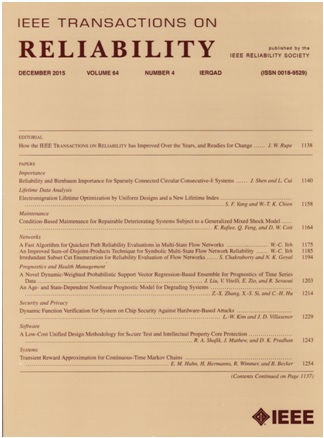直流牵引供电系统的统一模型及杂散电流耗散
IF 5.7
2区 计算机科学
Q1 COMPUTER SCIENCE, HARDWARE & ARCHITECTURE
引用次数: 0
摘要
直流牵引供电系统中杂散电流引起的直流干扰问题日益严重。为了研究杂散电流的干扰程度,基于直接边界元法(UBEM)建立了DPS和杂散电流耗散的统一模型。杂散电流采集网(SCCN)极化电位是评价杂散电流泄漏程度的重要指标。本文研究了SCCN极化电位与轨道对地电阻(RE)、列车行驶距离和SCCN纵向电阻的关系。为杂散电流保护和系统优化提供了部分理论依据和计算方法。现场试验和CDEGS软件仿真验证了该方法的有效性。结果表明,UBEM与CDEGS模拟结果的误差在6.07%以内,与现场试验结果的误差在11.45%以内。以中国实际地铁工程为例,SCCN极化电位只受局地杂散电流的影响。当RE>为7.35 Ω·km时,SCCN极化电位的平均值降至0.5 V以下。本文章由计算机程序翻译,如有差异,请以英文原文为准。
A Unified Model of DC Traction Power Supply System and Stray Current Dissipation
The problem of dc interference caused by stray currents in dc traction power supply system (DPS) is becoming increasingly serious. In order to study the interference degree of stray currents, a unified model of DPS and stray current dissipation based on the direct boundary element method (UBEM) has been established. The stray current collection network (SCCN) polarization potential is an important index to evaluate the leakage level of stray current. In this article, the relationship between SCCN polarization potential and rail-to-earth resistance (RE), train headways and longitudinal resistance of SCCN is investigated. It provides a partial theoretical basis and calculation method for stray current protection and system optimization. Field tests and CDEGS software simulations prove that UBEM is effective. The results show that UBEM is within 6.07% of the CDEGS simulation results and within 11.45% of the field test results. Taking the actual metro project in China as an example, SCCN polarization potential is only affected by local stray current. When RE>7.35 Ω·km, The average value of the SCCN polarization potential drops below 0.5 V.
求助全文
通过发布文献求助,成功后即可免费获取论文全文。
去求助
来源期刊

IEEE Transactions on Reliability
工程技术-工程:电子与电气
CiteScore
12.20
自引率
8.50%
发文量
153
审稿时长
7.5 months
期刊介绍:
IEEE Transactions on Reliability is a refereed journal for the reliability and allied disciplines including, but not limited to, maintainability, physics of failure, life testing, prognostics, design and manufacture for reliability, reliability for systems of systems, network availability, mission success, warranty, safety, and various measures of effectiveness. Topics eligible for publication range from hardware to software, from materials to systems, from consumer and industrial devices to manufacturing plants, from individual items to networks, from techniques for making things better to ways of predicting and measuring behavior in the field. As an engineering subject that supports new and existing technologies, we constantly expand into new areas of the assurance sciences.
 求助内容:
求助内容: 应助结果提醒方式:
应助结果提醒方式:


